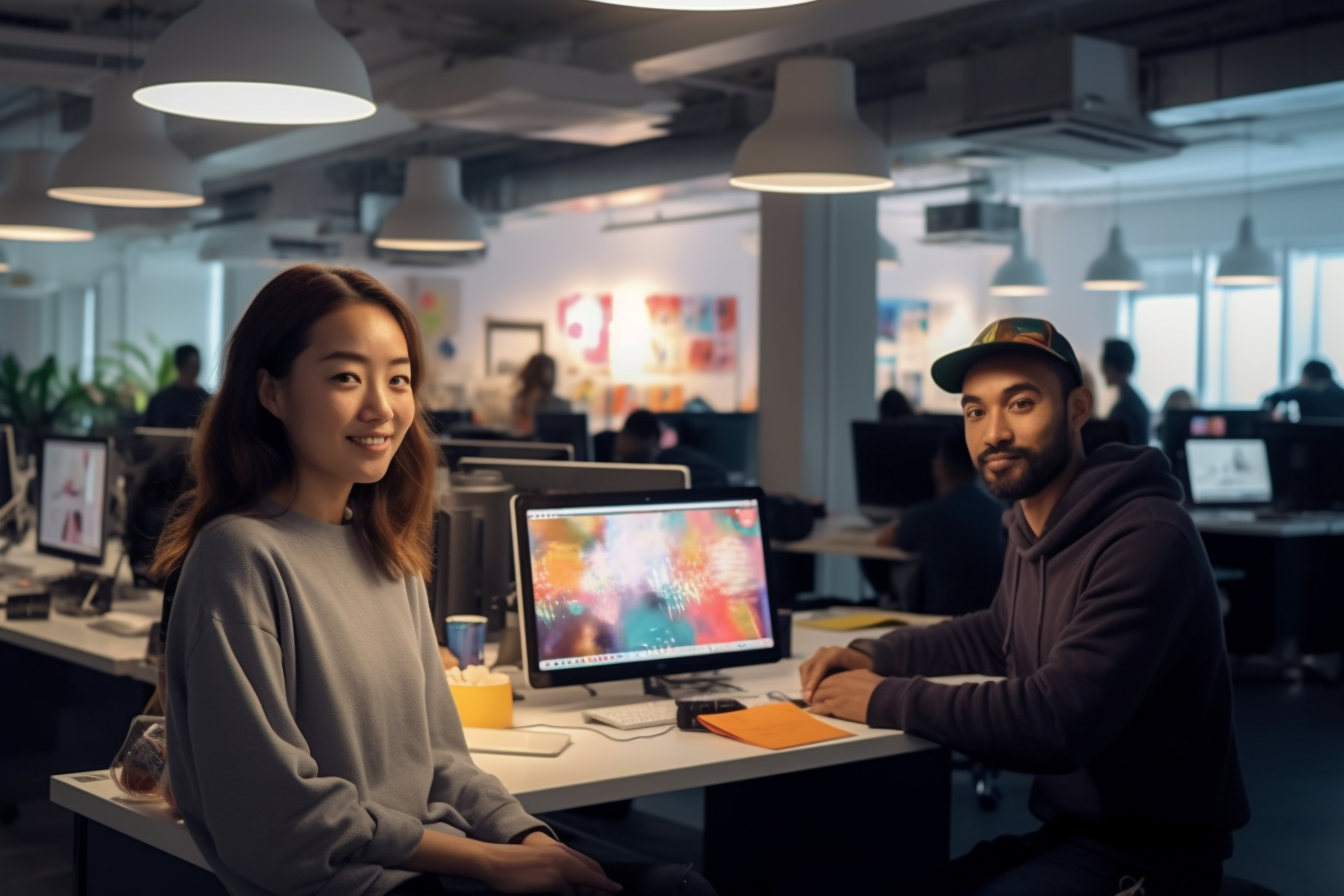The hot new recruit
How we are using AI to improve creativity and design.

The hot new recruit
10 min read
Branding
Words by Jen Barry
AI generated images by Gemma Nee
In the past year, there have been thousands of articles and papers about the impact of AI on various industries including education. Whilst you might think this post comes late to the party, it’s intentional as we got to grips with the various tools, in order to understand how best we could use them in branding.
Rather than take a firm stance on ‘This is the end of creativity as we know it” we wanted to take the time to test various tools for ourselves within our own workflows to really weigh up the benefits and pitfalls and form an opinion.
So, here is our take on it – but we should caveat that this article was structured by ChatGPT with the helpful prompt: I am writing a blog post about [insert topic]. Give me an outline for this blog post with 5 bullet points. Which leads us to our first point seamlessly.

The undeniable advantage of AI to date – at least for our teams – has been the increased efficiency and productivity. Taking this post as an example, with one simple prompt, ChatGPT was able to generate a framework for an article to help guide thinking and get us writing immediately. It has provided us with that initial spark, first push, and sometimes much needed prompt to get the engine started, and to be honest to an extent an inspiration or motivator to try harder, write better, think smarter, and work more efficiently as ultimately – we want to keep our bums in our seats of this industry.
At the end of writing this article, I’ll input it back into ChatGPT to check over accuracies and consistencies, but AI isn’t just a fancy way to spellcheck, in our industry we’re seeing it can usefully be applied to review brand personality, tone of voice and messaging. Tools such as IBM Watson and Google Cloud Natural Language are going to be golden for marketing teams to ensure consistency across ever growing brand touch points.
There are several AI tools, that often we aren’t even aware of, being used throughout the branding and design process to help improve overall workflow. Design automation tools in Adobe and Figma use AI to automate often mundane and repetitive tasks at speed and to ensure designs are consistent. Historically a lot of this typical ‘grunt’ work would be on the desk of a junior designer as a way for them to practice and hone their craft, but now with automation freeing up their time to think and act more creatively, we hope to see more junior entry level designers and creatives pushing boundaries to make their mark early on – which will surely be a good thing for our industry as a whole. Or….
We need the next generation to continue to be vocal and share their ideas and opinions in order to have a point of difference, otherwise what is their value and point of difference from AI.
…To play devil’s advocate, could AI start to replace the need for junior-mid level teams entirely? As the next generation step into the workforce, armed with their degrees, internships, experience, they are unsurprisingly going in with higher demands than previous generations in terms of compensation and benefits. But with tightening of budgets and purse strings due to macroeconomic factors, and the attractive draw of AI tools, there is a clear advantage for many companies to replace people with bots.
However, though the bullet point ‘potential loss of jobs’ was a prompt from ChatGPT for this article, using my first-hand experience and intuition, I refute this in our industry at least. Whilst some of the day to day tasks we might expect of junior-mid level creatives will be replaced, there is still a need for this next generation to bring the energy, insights, and also challenge senior people in the field. That being said, we need the next generation to continue to be vocal and share their ideas and opinions in order to have a point of difference, otherwise what is their value and point of difference from AI.
The most obvious area in which AI is potentially harmful in branding and creativity is the huge risk of generating formulaic designs. Given the design of algorithms using pre-existing data and patterns (which are also constrained in time) to generate ‘new’ concepts, ultimately they are just amalgamations of patterns and trends that have been successful in the past, and we stress the last point too. To us, successful branding and design has to be rooted in strategic thinking with a long term and future vision in order to add value and ultimately drive revenue and growth for a business. This means finding that golden opportunity space in which others haven’t walked before, so shouldn’t be able to be replicated by AI. Of course as designers and creatives we take inspiration from all around us, but it’s also recognising the gaps to create new brands or push existing ones. It’s also our job in this industry to try and be one step ahead – whether that is of our Clients or of consumers, anticipating their needs and shifting brands accordingly.
Successful branding and design has to factor in long term and a future vision in order to drive growth for a business. AI looks at historical data and patterns so will always be playing catch up.
The one field in particular that we are noticing generic design work is in performance marketing and social content. Given that there are clear metrics such as click through rates and engagement rates, relying too heavily on data and feedback for this type of content is creating an ocean of ‘sameness’ in content, which is causing desensitisation and blindness in consumers. Brand owners and marketers need to tread the waters carefully, and think of AI as a tool to support their own creativity and expertise rather than relying on it to generate complete designs.

If you’ve made it this far without skimming, then hopefully this proves the point we were trying to address. AI tools are incredible to help set up systems, frameworks, improve productivity and workflow – but ultimately we still need the warmth, creativity, and human input to really engage and connect with audiences. Brand design is about building a human connection between a business and consumer, being able to uncover and understand cultural and individual human nuances and speak directly to them. Given the fluidity and complexity of this, it’s unsurprising there are people who struggle with this, so how can we expect AI to successful replicate it, when as a tool it consolidates the mass data rather than seeing us individually.
Brand design is about building a human connection between a business and consumer; to reveal and understand cultural and individual nuances to speak directly to them.
In a world of sceptical consumers who are getting smarter each day, people see through the bots and automated responses. Whilst this will in turn make AI smarter too, right now (at least), it feels healthier and more positive to view AI as a really great sparring partner who is constantly challenging us and pushing us to do better and work smarter – ultimately leading to more creative output. It shouldn’t be seen as a tool to export volume and quantity for the sake of it; a digital camera can take thousands of images but it still takes a photographer’s skill and craft to get quality output.
This is a huge turning point for many industries including ours, and we either learn to use and work with it, or (rightly so) get left behind.
As a final note – this article, with the helpful initial prompt and framework from ChatGPT took 1 hour 25 minutes to write from beginning to end. All images were custom AI generated using Midjourney.